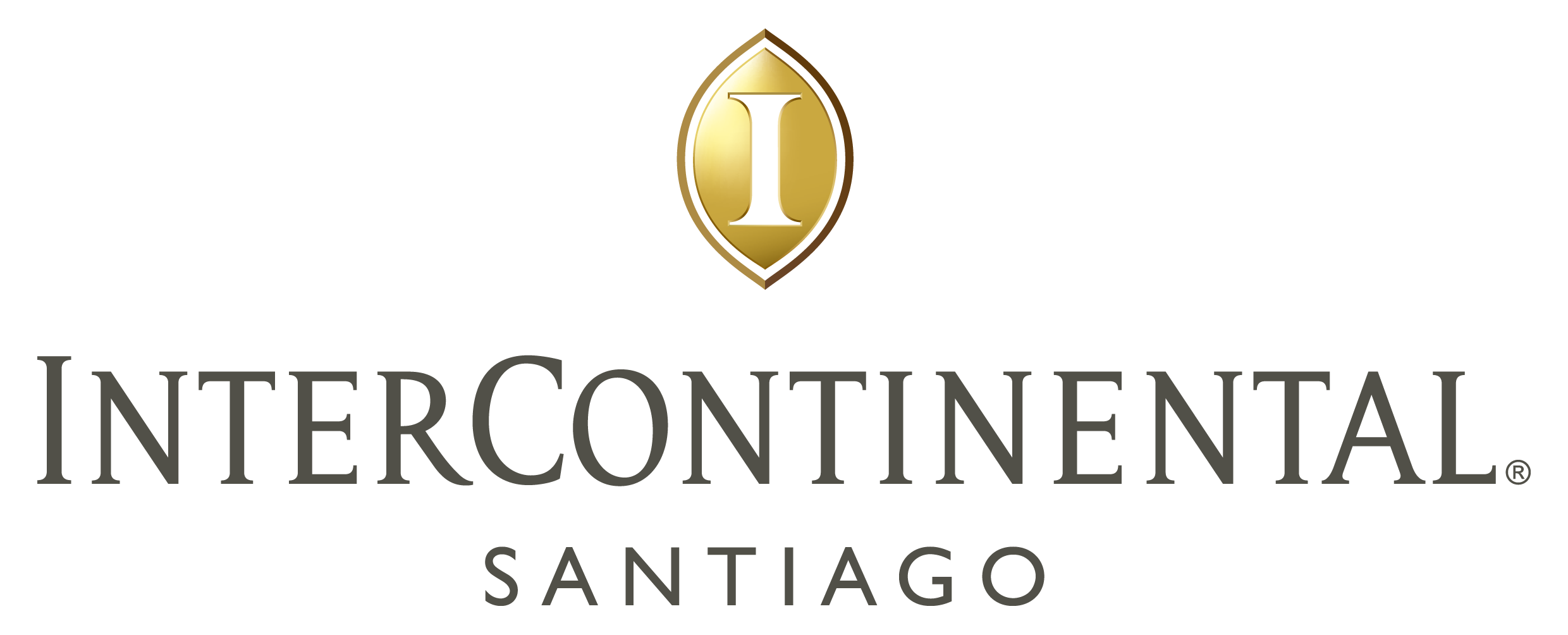Venue

Venue: InterContinental Santiago (Click here)
Address: Avenida Vitacura 2885 Las Condes. Santiago, CP7550024 Chile
Email 1: santiago@interconti.cl
Phone: 1 888 IC HOTELS (1 888 424 6835) & Front desk: +56-2-23942000
Distances:
. Santiago International Airport (Arturo Merino Benítez International Airport – IATA: SCL): 28-31 km
. Plaza Palacio de la Moneda – Plaza de la Constitución: 7.6 km
. Tobalaba Metro Station (Line 1, Av. Providencia 2593, 7510023 Providencia, Región Metropolitana): 0.8 km
Airport shuttle: There is no Airport Shuttle available
Link on Google Maps
Recomendations
- As Chile is located in the southern hemisphere, the seasons are the opposite of those in the north. The warmest months are December, January and February, and the coolest are June, July and August, but since Chile is so long, each zone has its own “thermal sensation“
- The voltage is 220 V / 50 Hz, and appliances also need an adapter to plug into the Chilean sockets, which can be found in supermarkets or specialty stores.
- Santiago is GMT minus 4 hours (GMT-4/UTC-4), in July.
- Chile is a seismic country, so you may feel more than one sudden shake or tremor during your stay. For your peace of mind, constructions are built under strict anti-seismic construction laws. In the event of an earthquake, you should stay calm, stand under a doorway or beam, stay away from windows and wait until it stops moving to go outside. Just remember to stay calm and follow instructions.
- The official currency for Chile is the Chilean Peso (CLP) and we use thousands! One thousand pesos is roughly US$ 1.1. Notes come in denominations of $1.000, $2.000, $5.000, $10.000 and $20.000 differentiated by color. Even though there are smaller amounts in coins, the most usual ones are $50, $100 and $500.
- Even though the quality of the tap water is good, foreigners may find it heavily chlorinated. Therefore, we recommend you avoid drinks which contain tap water or ice-cubes made from tap water. Prefer bottled water – con gas (sparkling) or sin gas (non-sparkling). *Avoid eating at market stalls or street vendors
- In restaurants and cafés a tip of 10% is expected. It is not included in the bill. Usually people leave a tip on the table when they leave. It is customary to take all the change first and then leave a tip.
- The Red Bus system in Santiago, Chile, is the city’s main public transportation network. It is part of an integrated system that includes buses, metro, and suburban trains, designed to provide users with an efficient and accessible travel experience. The buses cover the entire city through an extensive route network, operating modern, eco-friendly vehicles, many of which are electric, reflecting the city’s commitment to sustainability. Payment is made using the Bip! card, which also works on the Metro, making transfers between modes of transport seamless. If you’re visiting Santiago, this system is an excellent way to explore the city in an affordable, convenient, and environmentally friendly manner. More information in
- Santiago Metro: is a rapid transit system serving the city of Santiago, the capital of Chile. It currently consists of seven lines, 143 stations, and 149 kilometres of revenue route. The system is managed by the state-owned Metro S.A. and is the first rapid transit system in the country.

